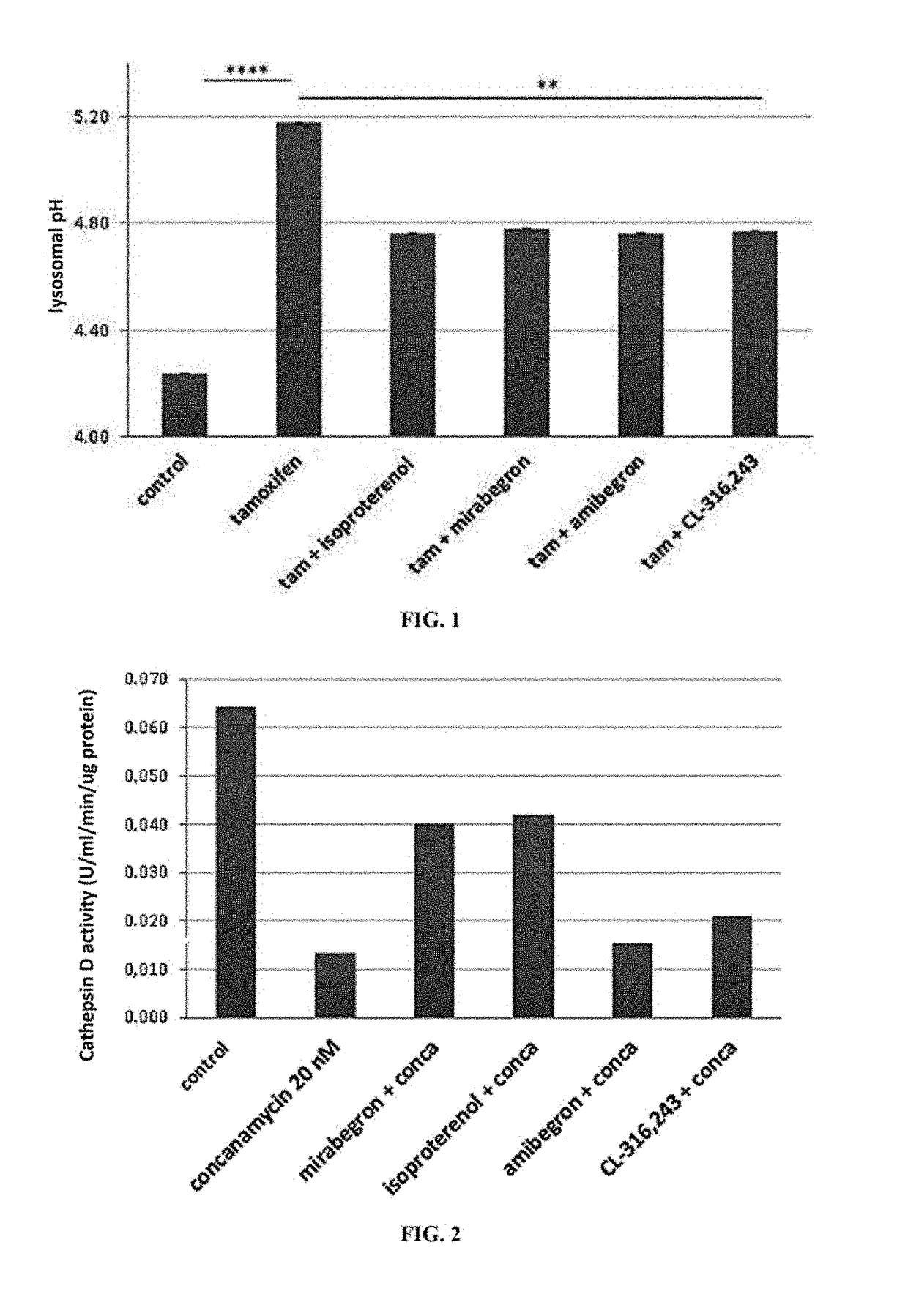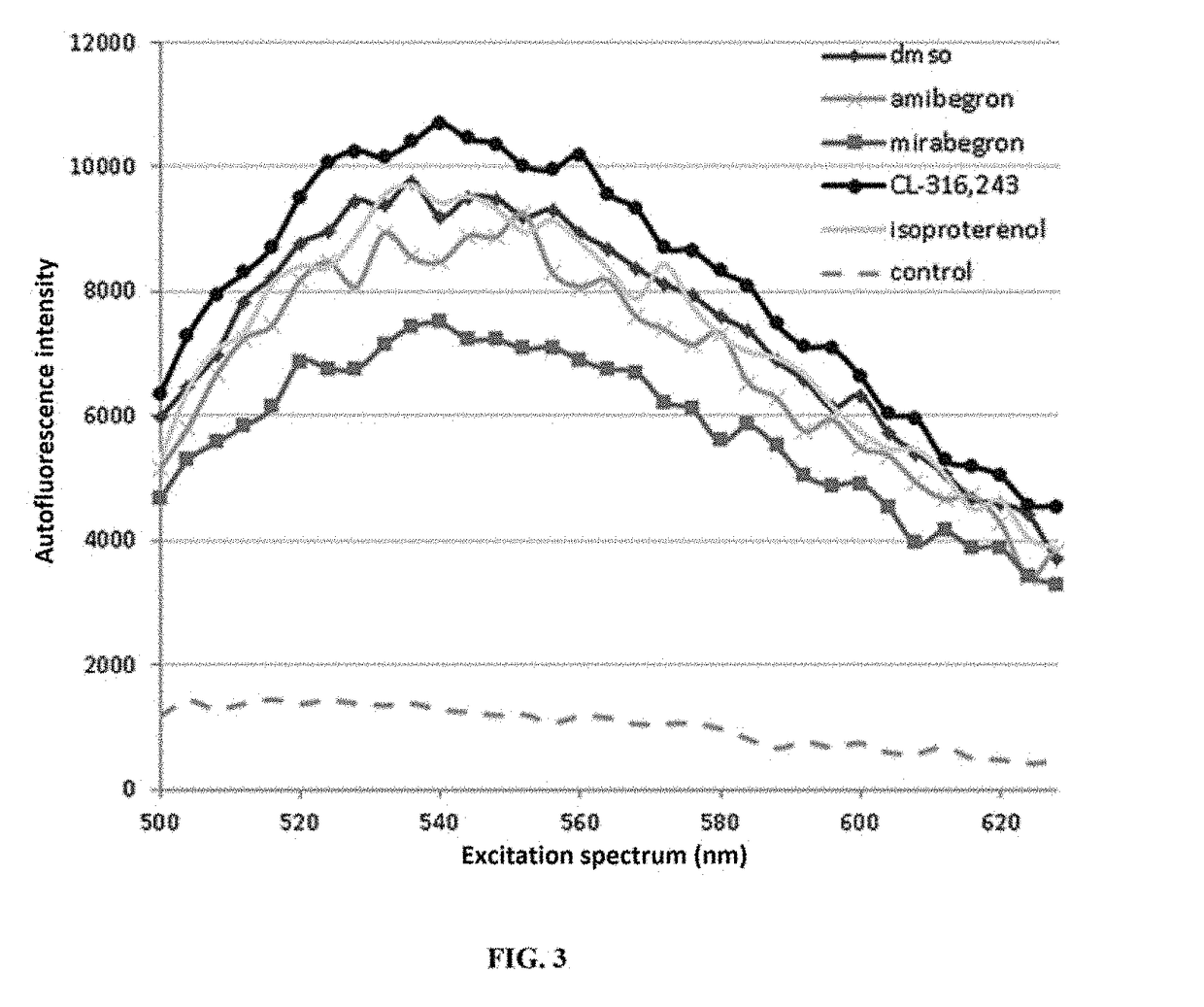Mirabegron for the treatment of retinal diseases
a technology of mirabegron and mirabegr, which is applied in the direction of drug compositions, pharmaceutical delivery mechanisms, medical preparations, etc., can solve the problems of unsuitable treatment, no approved therapy for preventing or treating atrophic amd, and no molecule has yet been validated clinically at the present tim
- Summary
- Abstract
- Description
- Claims
- Application Information
AI Technical Summary
Benefits of technology
Problems solved by technology
Method used
Image
Examples
example 1
Materials and Methods
Primary Porcine RPE Culture
[0128]Pigs' eyes are delivered to Institut de la Vision in a cold medium from a local slaughterhouse. The eyes are dissected so as to remove the anterior segment of the eye, the vitreous body and the neural retina. The eyeballs are then washed twice with PBS, filled with trypsin (0.25% in PBS) and incubated at 37° C. for 1 hr15. The RPE cells are then retrieved by repeated pipetting, centrifuged to remove the trypsin, and resuspended in DMEM culture medium supplemented with 20% foetal calf serum (DMEM20% FCS). The cells of each eye are then inoculated in a 6 cm diameter Petri dish, cultured in an atmosphere containing 5% CO2 at 37° C., and the culture medium is replaced after 24 hours and 4 days in vitro. After one week, the cells reach confluency and can then be passaged.
Alkalinisation and Measurement of Lysosomal pH (pHL) of RPE
[0129]After one week in culture, the cells are treated with trypsin and transferred to a 96-well plate with...
PUM
| Property | Measurement | Unit |
|---|---|---|
| diameter | aaaaa | aaaaa |
| pH | aaaaa | aaaaa |
| pH | aaaaa | aaaaa |
Abstract
Description
Claims
Application Information
 Login to View More
Login to View More - R&D
- Intellectual Property
- Life Sciences
- Materials
- Tech Scout
- Unparalleled Data Quality
- Higher Quality Content
- 60% Fewer Hallucinations
Browse by: Latest US Patents, China's latest patents, Technical Efficacy Thesaurus, Application Domain, Technology Topic, Popular Technical Reports.
© 2025 PatSnap. All rights reserved.Legal|Privacy policy|Modern Slavery Act Transparency Statement|Sitemap|About US| Contact US: help@patsnap.com



